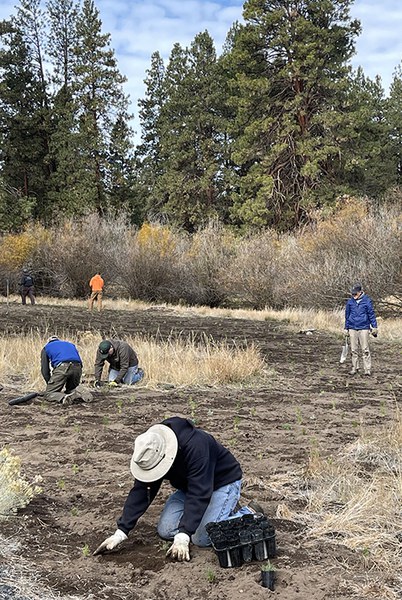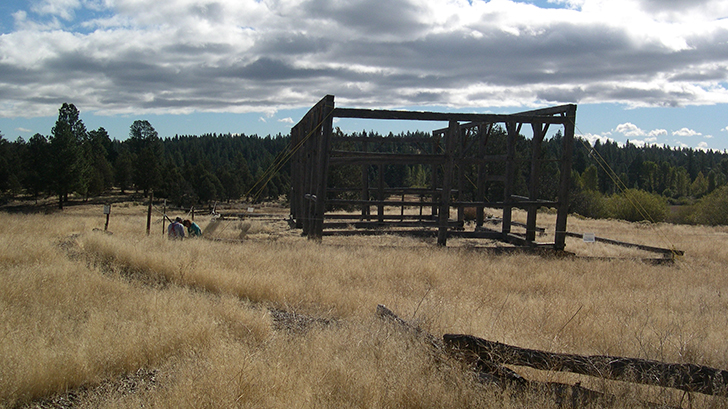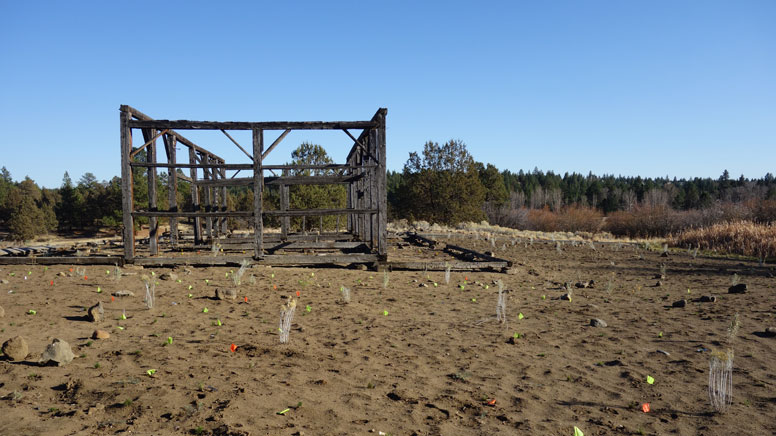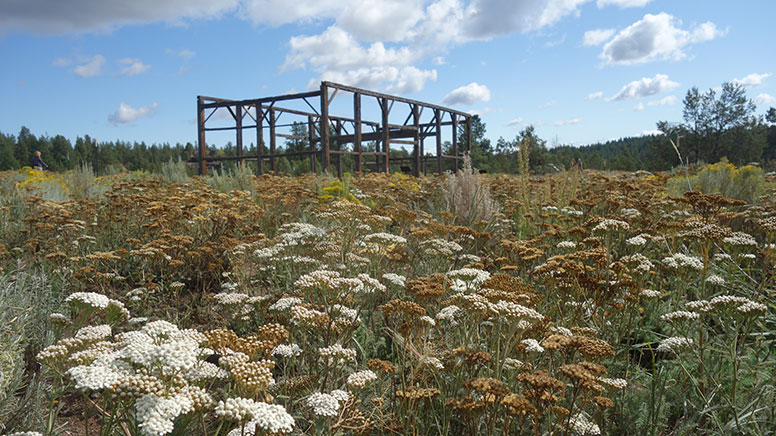In 2018, the Land Trust embarked on a multi-year native plant restoration project in the Hindman Springs portion of Camp Polk Meadow Preserve. For more than 150 years, this portion of the Preserve had been used as a ranch, farm, and home site. Non-native weeds were the primary thriving plant. Our goal is to restore nearly three acres of land by removing those weeds and re-establishing native grasses, wildflowers, and shrubs. So far, we have planted 13,500 new native plants at Hindman Springs which are now setting roots and beginning to build a flourishing native plant community that will provide much better habitat for wildlife. Learn more about the project below.
We began the native plant restoration using a process called soil solarization where we channeled the sun's powerful energy to bake the soil under a layer of plastic to kill weed seeds. Our goal was to kill the weeds and weed seeds that have been in the soil for 150 years! Solarization, while labor intensive, is an effective way to kill weeds and suppress germination of weed seeds far longer than many herbicides. Learn more about soil solarization.
Since solarization is labor intensive, we divided the Hindman Springs area up into sections and have solarized a new section each year. Every spring, volunteers work with staff to clear vegetation, till and water the soil, and then lay out and secure the clear plastic that "bakes" invasive weed seeds throughout the summer.
Every fall, we remove the plastic and plant native vegetation in the now (mostly) competition-free soil. New native plants include wildflowers like Oregon sunshine and scarlet gilia for drier areas and milkweed and big leaf lupine for wetter areas, plus shrubs like wax currant and common snowberry. We also add native seed to the restoration areas, including six grass species and blue flax.
So, how are all these plants doing?
In short, great, thanks to lots of care and tending from staff and volunteers! Each year, volunteers helped put plants back in the ground that were either pulled out by deer or pushed out by frost. Then, there was lots of weeding in spring! Solarization did a great job of reducing nonnative annual grass germination, but there were seed species that the solarization heat did not kill. Finally, each summer, our new plants needed water! The first summer, even for drought-adapted species, is always hard on plants so we set up an irrigation system and had volunteers help with watering. Huge thanks to all the volunteers who helped with deer patrol, weeding, and watering!
We have been thrilled to see that plant survival and seed germination were better than expected, and the transformation from a sea of cheatgrass and tumble mustard into diverse native pollinator habitat is inspiring! While, several “weedy” native species showed up this spring (yes, natives can be invasive too), we thinned those fast-growing species to make room for some of the slower growing natives.
The native plant restoration at Hindman Springs will take many years to mature and evolve to a state where it can take care of itself. In the meantime we will continue to manage it, including weeding, monitoring changes, and watching it thrive. Here's a visual of some of our progress:



Many thanks to the Oregon Community Foundation Historic Trails Fund, the Roundhouse Foundation, the Laird Norton Foundation, East Cascade Audubon Society, and private donors for making the Hindman Springs area preservation and restoration possible!
Learn more:


